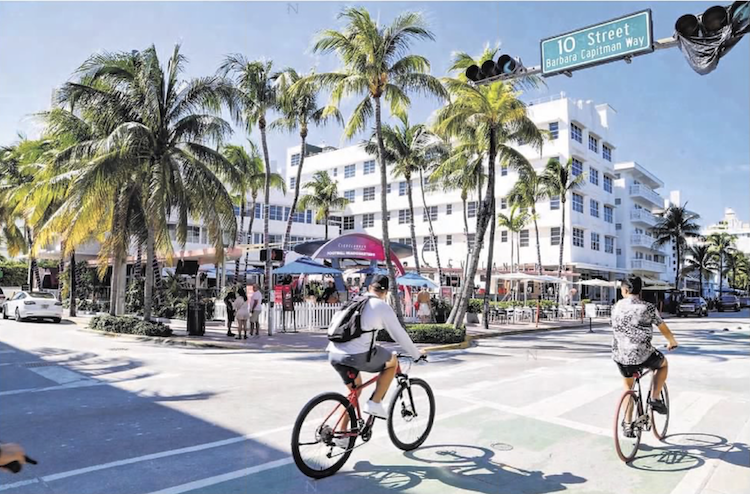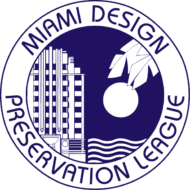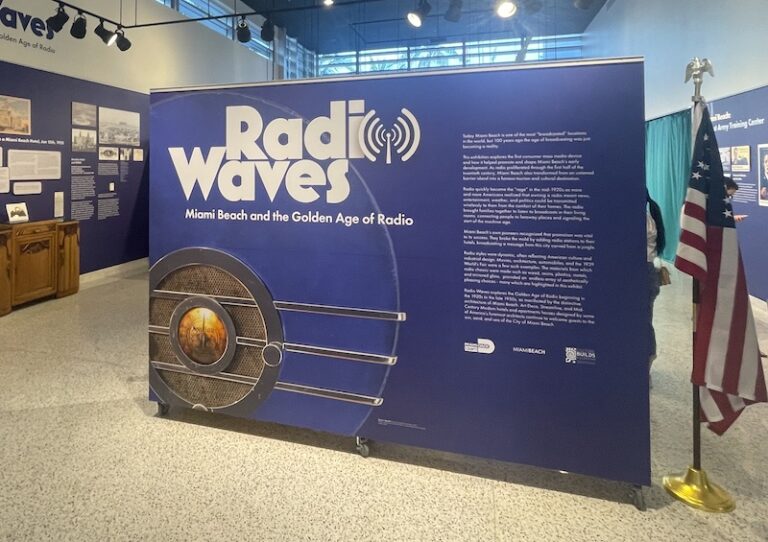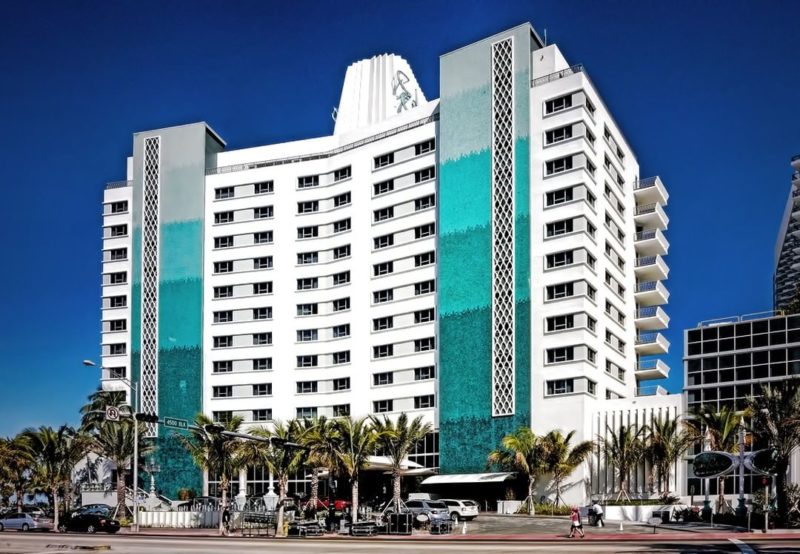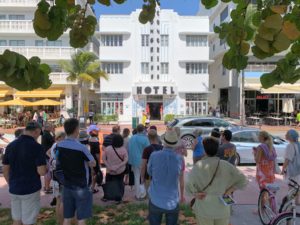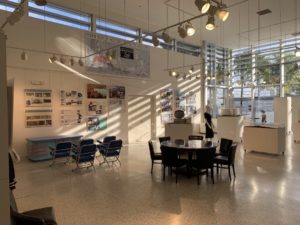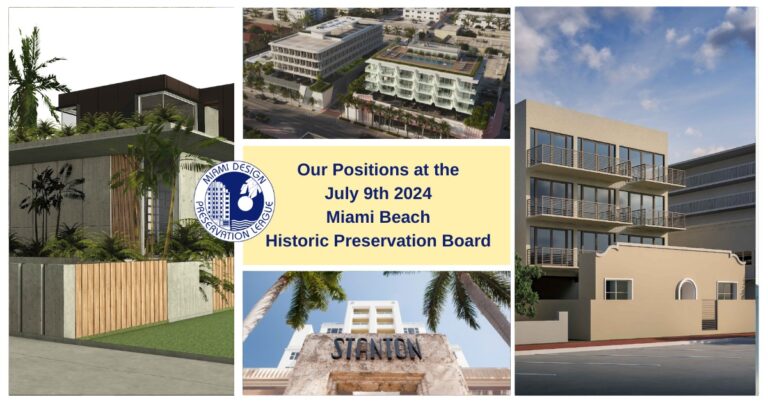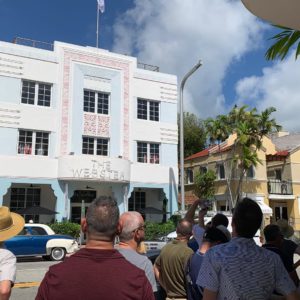Editors Note: The Barbara Baer Capitman archive’s “Historic Threads” project is sponsored in part by the Department of State, Division of Historical Resources and the State of Florida.
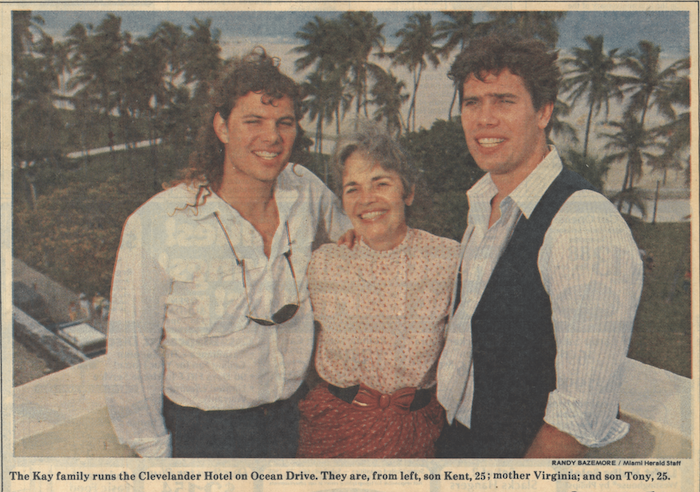
According to a 1986 Miami Herald article, in the 1980s developer Gerry Sanchez purchased numerous hotels along Ocean Drive. Mr. Sanchez was superstitious – and since he was 45 years old, the price he’d sell a property for would have to include the numbers 4 and 5: “For everything I sell, I have to make 45 cents or $4.50 or $45 or $4,500 or $45,000 or $450,000. I’m superstitious because that’s my age.” $450,000 is the profit he made while selling the Clevelander to the Kay Family for $1.65 million, after owning the property for four months.
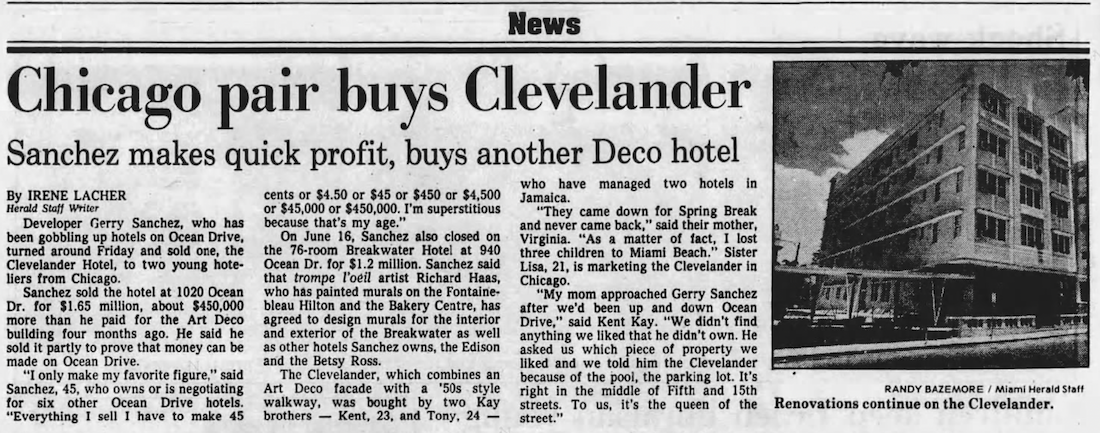
The Clevelander was designed by architect Albert Anis and built in 1938 by the Ratner Family of Cleveland. It had two features that were scarcely seen on Ocean Drive: its own parking lot and an original swimming pool. This was an opportunity the Kay brothers knew they could not miss out on. Kent 23, and Tony 24, had previously managed 2 buildings owned by their family in Jamaica. They came down to Miami Beach for Spring Break and never returned to Chicago.
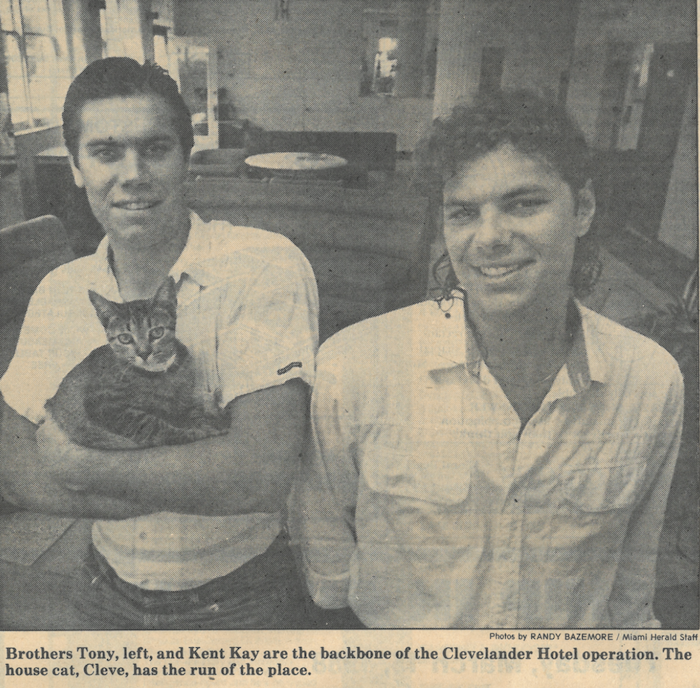
When Tony Kay became aware that the Clevelander was for sale, he persuaded his mother, Virginia, to fly down from Chicago to consider the deal. Virginia recognized it as “prime property” and seized the opportunity with an optimistic outlook on the future of Miami Beach.
The Clevelander became a family affair and every Kay member was willing to contribute. Their sister, Lisa, 22, was another part-owner while attending college and she would join her brothers as “chief bottle washer” as soon as she graduated. Their mother, Virginia, was the one to keep everyone in line, and her husband, Anthony Kay Sr. was a retired salesman living in Chicago, but he’d take part in construction when he’d come down to visit.
The Kays had also purchased Hotel Leonard (54 Ocean Drive) which they had originally planned to renovate, open a courtyard, and run as a resort. Instead, the Kay family sold the Leonard, as well as their two hotels in Ocho Rio, Jamaica, to fully focus on the renovation of the Clevelander.
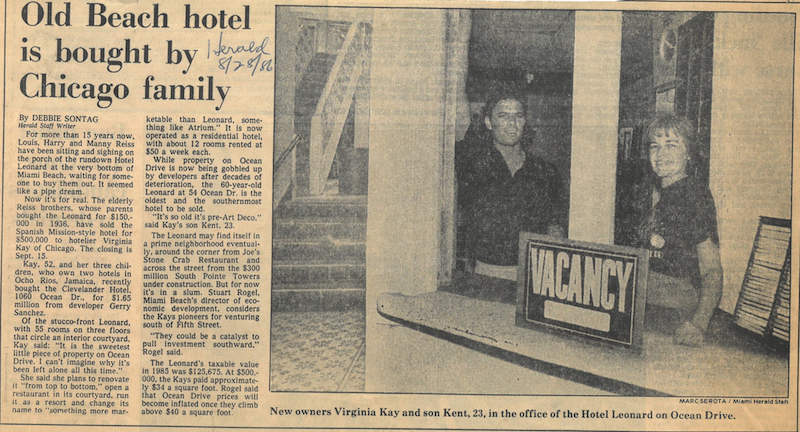
The Clevelander’s Art Deco façade was added onto in the 1950s with a walkway connecting the parking lot to the hotel entrance. The hotel had 66 rooms that needed to be repainted and modernized. They added sturdy hardwood furniture and the walls were painted in Art Deco pastels. The Kays installed central air conditioning, a direct dialing phone system, and fixed roof leaks. Their tree-planting project included adding 16 sabal palms and 3 coconut palms for the land adjacent to the parking lot. One factor of the Clevelander’s success at the time was pricing: While other hotels on Ocean Drive were charging $75-$95 per night, the Clevelander had moderate rates ranging from $45 to $70.
From the archives articles:
“When the Kays purchased the hotel in June 1986, they inherited the product of years of neglect. “Disgraceful” is how Tony described the interior. The worn carpeting was yellow, orange and green; and the walls were yellow, orange and green – the kind that didn’t match the carpet,” Virginia Kay said.“
“Most developers who bought depressed Ocean Drive properties closed them for renovation and hired a contractor to do the work. The Kays were different. Short on cash and long on commitment, they did almost everything themselves, working around the guests.” “We’d tell the guests not to touch the walls that had been repainted,” Kent said. “As a pipe busted, we fixed it.” – Lynn Horsley, Miami Herald
The Kay brothers began by adding a fun and informal bar to their hotel, including beer and oysters on the half-shell. In 1989, the Clevelander made an innovative decision that was deemed a new phenomenon: live outdoor music. This was not common back then, but they became trendsetters of sorts because soon Penrod’s Beach Club followed by adding live music of their own, as did Tropics, Oceanside Promenade, and in March of 1991, Mango’s Tropical Café.
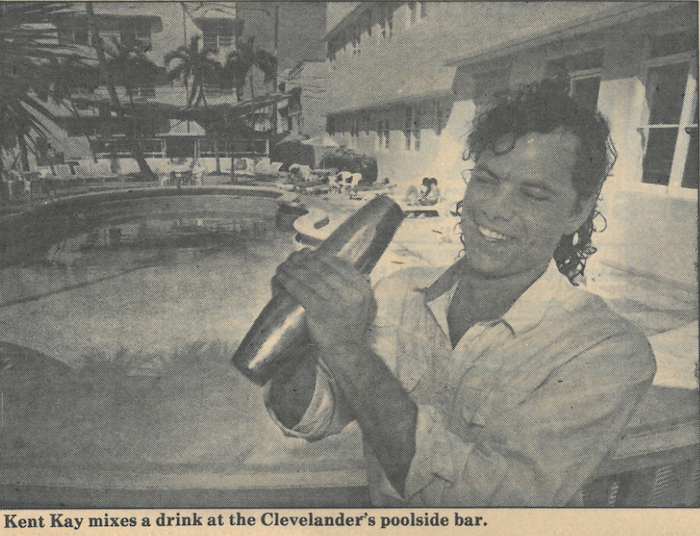
In 1995, Miami Beach implemented a noise law that would enforce zero noise tolerance throughout the city, but with one notable exception: the two-block area of Ocean Drive that houses both the Clevelander and Mango’s Tropical Café. Today the Clevelander is monumental in Miami Beach’s nightlife scene and internationally recognized as one of the most iconic places to party in the world.
